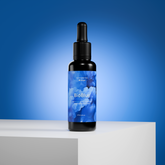Is Blue Light Used in Photodynamic Therapy?
Photodynamic therapy (PDT) is a minimally invasive treatment that uses light-sensitive compounds and light to kill bacteria, reduce inflammation, and treat various medical conditions, including oral health issues. While red light is commonly associated with photodynamic therapy, blue light also plays a significant role in this therapeutic approach. This article explores the use of blue light in photodynamic therapy, its benefits for oral health, and how it differs from other light-based treatments.
What is Photodynamic Therapy?
Understanding Photodynamic Therapy in Oral Health
Photodynamic therapy (PDT) involves three key components: a photosensitizing agent (usually a special type of dye), a specific wavelength of light, and oxygen. When the photosensitizing agent is applied to the target area and activated by the light, it produces a reactive form of oxygen that destroys harmful cells and bacteria. PDT is widely used in dentistry to treat conditions such as gum disease, oral infections, and even some types of oral cancers.
How Does Blue Light Work in Photodynamic Therapy?
Blue light, typically between 400 and 500 nanometers in wavelength, is used in PDT for its ability to activate specific photosensitizing agents effectively. The mechanism of action involves:
- Activation of Photosensitizing Agents: Blue light penetrates the tissues and activates the photosensitizing agents that have been applied to the affected area, such as diseased gums or teeth.
- Production of Reactive Oxygen Species: The activation of these agents leads to the production of reactive oxygen species (ROS), which kill bacteria and reduce inflammation without damaging healthy tissue.
Benefits of Using Blue Light in Photodynamic Therapy
1. Effective Against Harmful Bacteria
Blue light is particularly effective in targeting and killing bacteria that contribute to oral diseases:
- Targets Pathogenic Bacteria: Blue light, when used in conjunction with a photosensitizing agent, can effectively kill bacteria such as Porphyromonas gingivalis and Streptococcus mutans, which are known to cause gum disease and tooth decay.
- Reduces Biofilm Formation: By disrupting bacterial biofilms, blue light PDT helps prevent the accumulation of plaque, reducing the risk of cavities and periodontal disease.
2. Non-Invasive and Safe
Photodynamic therapy using blue light is a non-invasive treatment option that is safe for most patients:
- Minimal Side Effects: Unlike some antimicrobial treatments that can cause irritation or resistance, blue light PDT does not induce bacterial resistance and has minimal side effects when used correctly.
- Quick Recovery: As a non-invasive procedure, PDT allows for quick recovery times, making it a convenient option for treating oral infections and inflammations.
3. Supports Overall Oral Health
Regular use of blue light PDT can enhance oral health by maintaining a balanced microbial environment:
- Reduces Inflammation: By targeting bacteria that cause gum disease, blue light therapy helps reduce gum inflammation and promotes healthier gums.
- Prevents Oral Diseases: Consistent use of PDT can help maintain a lower bacterial load in the mouth, reducing the risk of oral diseases like cavities and gingivitis.
How to Use Blue Light in Photodynamic Therapy
Applications in Dental Care
- Treatment of Gum Disease: Blue light PDT is particularly effective in treating gum disease by reducing the bacterial load in periodontal pockets and promoting gum health.
- Management of Oral Infections: Blue light can be used to manage oral infections by targeting and killing bacteria that contribute to the infection, leading to quicker healing and reduced symptoms.
- Prevention of Tooth Decay: By reducing harmful bacteria and preventing plaque formation, blue light PDT can be a preventive measure against tooth decay.
Best Practices for Using Blue Light in PDT:
- Consult Your Dentist: Before starting photodynamic therapy, consult with your dentist to determine if it is suitable for your oral health needs and to receive proper guidance on its application.
- Use Professional-Grade Equipment: Ensure that you use professional-grade blue light devices available at dental clinics to ensure safety and effectiveness.
- Follow Instructions Carefully: Adhere strictly to the instructions provided by your dental professional to avoid overuse and minimize the risk of side effects.
- Combine with Regular Oral Hygiene Practices: For optimal results, use blue light PDT in conjunction with regular brushing, flossing, and professional dental cleanings to maintain a balanced oral microbiome.
Potential Risks and Considerations
While blue light PDT is generally safe, there are some considerations:
- Proper Usage is Key: Incorrect application of blue light therapy can lead to ineffective results or irritation. Always follow professional guidance and use the device as directed.
- Not a Standalone Solution: Blue light PDT should be used as part of a comprehensive oral care routine, including regular brushing, flossing, and dental check-ups, to maintain optimal oral health.
- Sensitivity Concerns: Some patients may experience temporary sensitivity following PDT. This is usually mild and resolves on its own.
Conclusion
Blue light is an effective component of photodynamic therapy, offering several benefits for oral health, including reducing harmful bacteria, preventing plaque formation, and supporting overall gum health. When used correctly and under the guidance of a dental professional, blue light PDT can be a valuable addition to your oral care routine. However, it should be used as part of a broader approach to maintaining oral hygiene, including traditional methods like brushing and flossing. Always consult with your dentist to determine if photodynamic therapy with blue light is the right choice for your specific needs.








